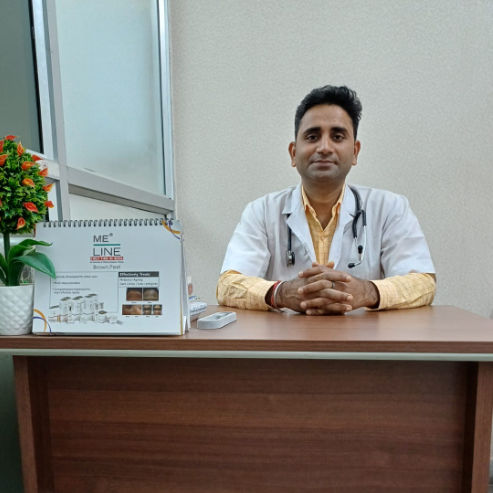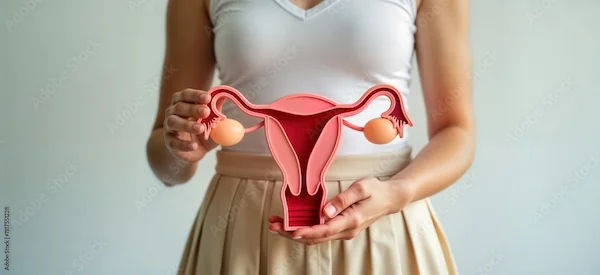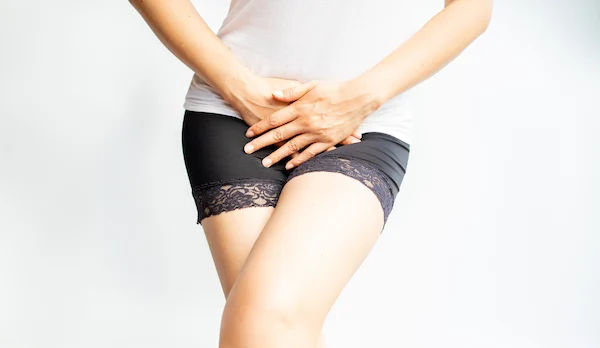Bladder Spasms After Hysterectomy
Experiencing bladder spasms after a hysterectomy? Understand the causes, symptoms, and effective treatments for this common post-surgical discomfort. Find relief and regain comfort.

Written by Dr.Sonia Bhatt
Last updated on 7th Jul, 2025
.webp)
Introduction
If you’ve recently had a hysterectomy and are experiencing sudden, painful contractions in your bladder, you might be dealing with bladder spasms. This is a common issue many women face after the procedure, but the good news is that it’s usually temporary and manageable.
In this article, we’ll explain what bladder spasms are, why they happen after a hysterectomy, how to recognize them, and most importantly—how to find relief.
What Are Bladder Spasms?
Bladder spasms are sudden, involuntary contractions of the bladder muscles, often causing:
A strong, urgent need to urinate
Frequent urination (even when the bladder isn’t full)
Pain or burning sensation during urination
Lower abdominal discomfort or cramping
These spasms can be uncomfortable and disruptive, but they typically improve with time and proper care.
Why Do Bladder Spasms Happen After a Hysterectomy?
A hysterectomy involves removing the uterus, and sometimes other nearby structures like the cervix, ovaries, or fallopian tubes. Since the bladder sits very close to the uterus, it can be affected during surgery in several ways:
1. Bladder Irritation – The bladder may get irritated from surgical instruments or movement during the procedure.
2. Nerve Disruption – Nerves controlling bladder function might be temporarily affected, leading to spasms.
3. Urinary Tract Infection (UTI) – Surgery increases the risk of UTIs, which can cause spasms.
4. Catheter Use – A catheter is often used during surgery, which can irritate the bladder lining.
Most women notice these spasms in the first few weeks after surgery, but they usually resolve as the body heals.
Consult Top Nephrologist
How to Manage Bladder Spasms After Hysterectomy
While bladder spasms can be frustrating, there are several ways to ease discomfort and speed up recovery:
1. Stay Hydrated (But Avoid Irritants)
Drink plenty of water to flush out bacteria and reduce irritation.
Avoid caffeine, alcohol, carbonated drinks, and spicy foods—they can worsen spasms.
2. Try BladderSoothing Foods
Cranberry juice (unsweetened) may help prevent UTIs.
Probiotics (like yogurt) support urinary tract health.
3. Practice Pelvic Floor Exercises
Gentle Kegel exercises can strengthen bladder control and reduce spasms.
Ask your doctor for guidance on when to start these after surgery.
4. Use Heat Therapy
A warm heating pad on your lower abdomen can relax bladder muscles and ease pain.
5. Medications (If Needed)
Your doctor may prescribe antispasmodic medications to relax the bladder.
Over the counter pain relievers (like ibuprofen) can help with discomfort.
6. Avoid Straining
Don’t push too hard when urinating—let your bladder empty naturally.
If you’re struggling with urination, consult your doctor.
When to See a Doctor
Most bladder spasms improve within a few weeks, but contact your doctor if you experience:
Severe pain that doesn’t go away
Blood in urine
Fever or chills (signs of infection)
Inability to urinate
These could indicate a UTI, bladder injury, or another complication needing medical attention.
Preventing Future Bladder Issues
To support longterm bladder health after a hysterectomy:
Empty your bladder fully – Don’t hold urine for too long.
Maintain good hygiene – Wipe front to back to prevent infections.
Stay active – Gentle walking helps circulation and healing.
Final Thoughts
Bladder spasms after a hysterectomy are common but manageable. With patience, hydration, and the right care, most women find relief within weeks. If symptoms persist or worsen, don’t hesitate to seek medical advice.
If you’re struggling with posthysterectomy bladder issues, Apollo 24|7 can help. You can consult a specialist or schedule a test for further evaluation.
Consult Top Nephrologist
Consult Top Nephrologist

Dr. Kity Sarkar
Nephrologist
15 Years • MBBS,MD(Genl. Med.), DrNB(NEPHROLOGY)
Kolkata
Dr. Kity Sarkar's Clinic, Kolkata

Dr. Hareesha Babu K
Nephrologist
25 Years • MBBS, MD (General Medicine), DM (Nephrology),FASN, FRCP(Glasg), FRCP (Edin)
Bangalore
Kidney & Hypertension Care, Bangalore
(125+ Patients)

Dr. S Bipin Kumar
Nephrologist
13 Years • MBBS, MD General Medicine, DM, Nephrology
Rajamahendravaram
SG KIDNEY CARE, Rajamahendravaram

Dr. Govardhan Gupta
Nephrologist
15 Years • MBBS, DNB General Medicine, DrNB Nephrology
Mumbai
Oscar Superspeciality Hospital, Mumbai

Dr. Anantha Rao
Nephrologist
7 Years • MBBS, DNB (General Medicine), DNB (Nephrology)
Kurnool
Aakash hospital and KIMS hospital, Kurnool
Consult Top Nephrologist

Dr. Kity Sarkar
Nephrologist
15 Years • MBBS,MD(Genl. Med.), DrNB(NEPHROLOGY)
Kolkata
Dr. Kity Sarkar's Clinic, Kolkata

Dr. Hareesha Babu K
Nephrologist
25 Years • MBBS, MD (General Medicine), DM (Nephrology),FASN, FRCP(Glasg), FRCP (Edin)
Bangalore
Kidney & Hypertension Care, Bangalore
(125+ Patients)

Dr. S Bipin Kumar
Nephrologist
13 Years • MBBS, MD General Medicine, DM, Nephrology
Rajamahendravaram
SG KIDNEY CARE, Rajamahendravaram

Dr. Govardhan Gupta
Nephrologist
15 Years • MBBS, DNB General Medicine, DrNB Nephrology
Mumbai
Oscar Superspeciality Hospital, Mumbai

Dr. Anantha Rao
Nephrologist
7 Years • MBBS, DNB (General Medicine), DNB (Nephrology)
Kurnool
Aakash hospital and KIMS hospital, Kurnool




